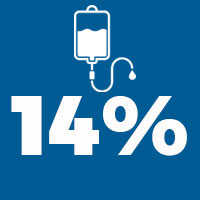The study concluded:
- Asymptomatic infection has profound implications in this population as there was a higher risk of death, but not hospitalization
- More than half of the cases detected were asymptomatic at testing, which is consistent with other early reports in this setting
- Residents who are asymptomatic, and test positive, have up to 2 times the mortality risk of residents who test negative for SARS-CoV-2
 English
English


